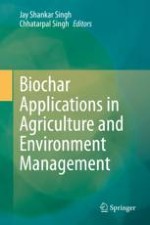Abstract
Soil contamination with heavy metals has become a serious concern. Due to their non degradable nature, speciation and bioavailability to the living organisms, heavy metals are prone to enter the food chain. Heavy metals are also known as trace elements because they are found in trace concentration into the environment (<10 ppm or ppb). Accumulation of heavy metals and metalloids such as As, Pb, Cd, Hg, Se, Cd in soil is an issue of growing concern due to their lethal, carcinogenic, mutagenic effects, and multiple organ dysfunction in the living organisms. However some heavy metals like Cr, Zn, Bo, Cu, Co, Fe, Mn and Ni are necessary in trace amount for different biochemical functions of animal and plant system. Rapid urbanization and increasing industrialization leads to the accumulation of heavy metals into the soil. Contaminated soil can causes many physiochemical and biochemical changes into plants resulting in reduced growth, affecting the yield which eventually leads to food insecurity. Many strategies like isolation, immobilization, extraction, phytoremediation, soil washing, etc. are used for remediation of heavy metal contaminated soil.
Biochar has been applied to soil as a novel carbon rich material for heavy metal remediation. Biochar is a solid product with porous structure, obtained when biomass is thermo-chemically treated in a closed container in oxygen-limited environment. Physicochemical properties of biochar made it a potential candidate for long term carbon storage. Low production cost, high cation exchange capacity, pH, surface functional groups and porous structures are some of the intrinsic properties of biochar making it a choice as an adsorbent for heavy metal remediation from soil. Biochar has capacity to make complex with heavy metals present in soil, which reduce their bioavailability.
